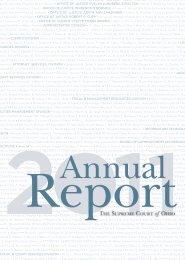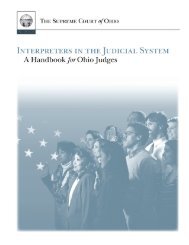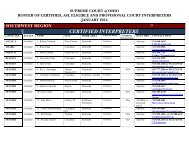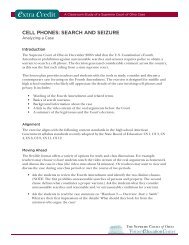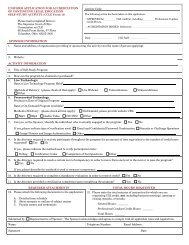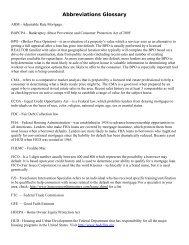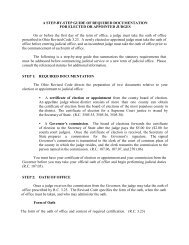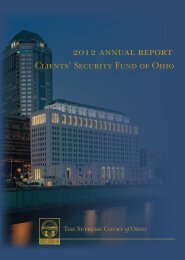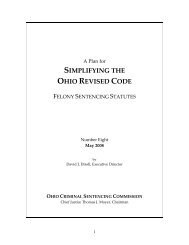Planning for Parenting Time: Ohio's Guide for Parents Living Apart
Planning for Parenting Time: Ohio's Guide for Parents Living Apart
Planning for Parenting Time: Ohio's Guide for Parents Living Apart
You also want an ePaper? Increase the reach of your titles
YUMPU automatically turns print PDFs into web optimized ePapers that Google loves.
To <strong>Parents</strong><br />
TO PARENTS<br />
Raising children presents challenges. When parents live in separate<br />
homes, the challenges are greater because relationships become more<br />
complicated. Sometimes parents disagree about how much time children<br />
should spend with each parent.<br />
This <strong>Guide</strong> is a<br />
tool to help you<br />
design a<br />
parenting time<br />
schedule that will<br />
work best <strong>for</strong> you<br />
and your children.<br />
Unless special circumstances exist (See page 66 on “Special Issues.”),<br />
preserving a healthy and ongoing relationship between children and both<br />
parents after divorce or separation is of greatest importance. Positive<br />
involvement with both parents furthers the child’s emotional and social<br />
development, academic achievement, and overall adjustment. Adult<br />
children of divorce describe the loss of contact with a parent and conflict<br />
between their parents as the most painful parts of divorce or parental<br />
separation.<br />
This <strong>Planning</strong> <strong>for</strong> <strong>Parenting</strong> <strong>Time</strong> – Ohio’s <strong>Guide</strong> <strong>for</strong> <strong>Parents</strong><br />
<strong>Living</strong> <strong>Apart</strong> provides helpful ideas to parents who live separately,<br />
when determining a parenting time schedule. A parenting time schedule<br />
establishes when the children will be with each parent. The <strong>Guide</strong> shows<br />
sample schedules that are appropriate <strong>for</strong> each age group and<br />
developmental stage. It also provides in<strong>for</strong>mation on how to address<br />
special circumstances like relocation and long-distance parenting. The<br />
purpose of the <strong>Guide</strong> is to help parents reduce conflict and reach<br />
agreement on parenting time more easily.<br />
Each child and each family is unique. The <strong>Guide</strong> neither endorses a<br />
“standard” parenting schedule, nor mandates a minimum or maximum<br />
amount of parenting time <strong>for</strong> either parent. There may be circumstances<br />
when the <strong>Guide</strong> may not be helpful, <strong>for</strong> example, when there has been<br />
child abuse, domestic violence, or substance abuse.<br />
Attorneys, mental health professionals, mediators, and judges also may<br />
find the <strong>Guide</strong> useful in resolving family court disputes. Share it with<br />
your attorney and other professionals assisting you in the court process.<br />
This <strong>Guide</strong> was created by a subcommittee of judicial officers, mental<br />
health providers and attorneys and is the “Ohio version” of an Arizona<br />
Supreme Court publication. The subcommittee consulted well-known<br />
experts on child development and reviewed current research and<br />
parenting guidelines from other communities. Decisions about parenting<br />
time depend on many things, particularly the age of the child. This <strong>Guide</strong><br />
3



